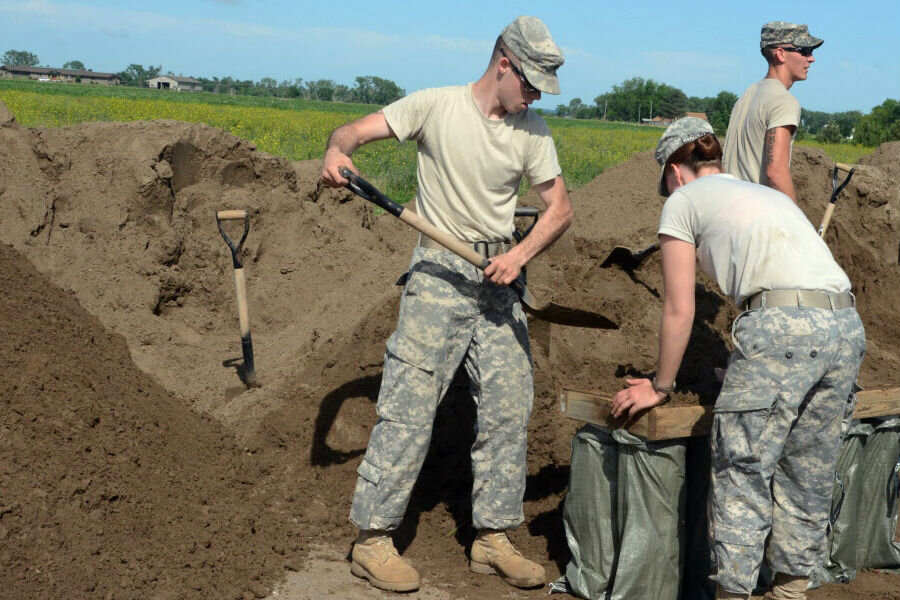Record floods in Midwest may be part of larger pattern, locals say
Loading...
Cities across three states are preparing for record floods later in the week as torrential rains move across the Upper Midwest.
In Iowa, South Dakota, and Nebraska, officials are asking volunteers to build sandbag barriers and other fortifications in advance of the brunt of the storm – but politicians and emergency workers are conceding that their efforts, in some areas, may not be enough.
In South Dakota, workers have begun turning a major Interstate exchange bridge into a temporary levee. While officials there say that will mitigate the flood in many locales, Governor Dennis Daugaard (R) said he expects parts of North Sioux City, S.D., to be underwater by the end of the week.
The Big Sioux River, which passes beside North Sioux City, is expected to break the previous flood record, set in 1969, by about a foot on Friday. Across the river, in Iowa, several areas have already flooded after two to six inches of rain that have fallen across portions of the state during the last several days.
In three counties, this rainfall has overwhelmed drinking water and sewage treatment plants. Near the Minnesota border, officials have already ordered the evacuation of Rock Rapids, Iowa, after determining that the sandbag walls there would be insufficient.
“We’re right in the middle of what we call flood fight, getting everything ready and getting stuff in order,” said Sioux City, Iowa, Assistant Fire Chief Jim Clark, to the Sioux City Journal on Wednesday.
Despite the potential damage of the coming storm, some local residents and analysts are saying that this kind of dramatic flood has become more the rule than the exception for northern Iowa in recent years.
“Rainfall data from Iowa show increased annual precipitation over the last century,” wrote Mary Skopec, a research geologist at the Iowa Department of Natural Resources, in a 2010 report. “They also show an increasing intensity of rainfall events.”
The third annual US National Climate Assessment, released by the White House this May, concurred with Ms. Skopec, noting that cities in Iowa had become more and more vulnerable to major flooding during the last two decades.
Some residents of northern Iowa have even come up with novel solutions to the changing weather pattern. In the town of Chelsea, residents last year debated collectively moving to higher ground after the entire downtown was repeatedly flooded, The New York Times reports.
Fortunately Sioux City, Iowa, the area's major population center, is unlikely to face such a dramatic dilemma. Officials are expecting many areas of the city to avoid serious flooding – including the neighborhood of Riverside, which sits on the banks of the Big Sioux River.







